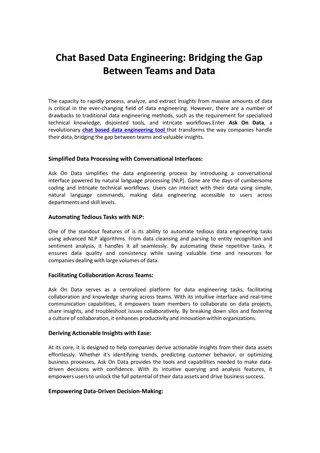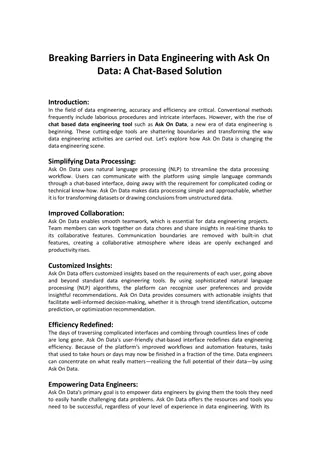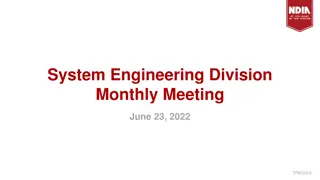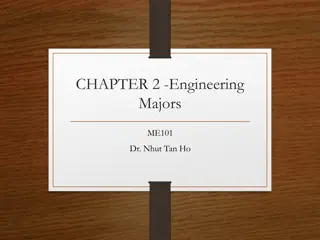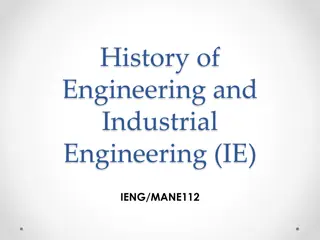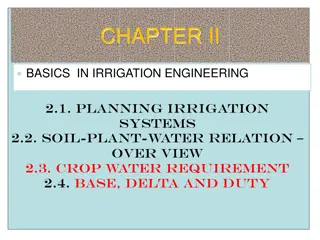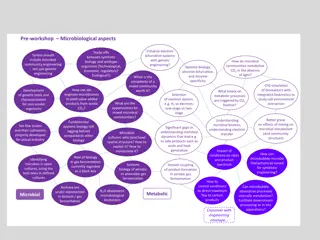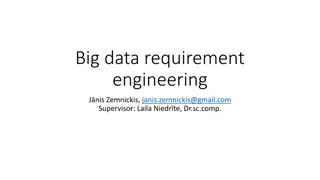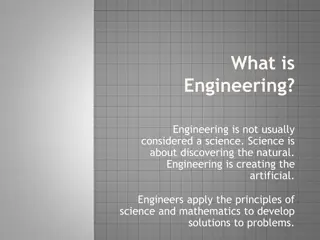
Understanding Requirement Engineering in Software Development
Requirement engineering is a vital process in software design, involving defining, documenting, and maintaining requirements to meet customer needs. Discover the steps involved, such as feasibility study, requirement elicitation, specification, validation, and management.
Download Presentation

Please find below an Image/Link to download the presentation.
The content on the website is provided AS IS for your information and personal use only. It may not be sold, licensed, or shared on other websites without obtaining consent from the author. If you encounter any issues during the download, it is possible that the publisher has removed the file from their server.
You are allowed to download the files provided on this website for personal or commercial use, subject to the condition that they are used lawfully. All files are the property of their respective owners.
The content on the website is provided AS IS for your information and personal use only. It may not be sold, licensed, or shared on other websites without obtaining consent from the author.
E N D
Presentation Transcript
SOFTWARE ENGINEERING REQUIREMENT ENGINEERING
REQUIREMENT ENGINEERING It refers to the process of defining, documenting, and maintaining requirements in the engineering design process. Requirement engineering provides the appropriate mechanism to understand what the customer desires, analyzing the need, and assessing feasibility, negotiating a reasonable solution, specifying the solution clearly, validating the specifications and managing the requirements as they are transformed into a working system. Thus, requirement engineering is the disciplined application of proven principles, methods, tools, and notation to describe a proposed system's intended behavior and its associated constraints.
PROCESS OF REQUIREMENT ENGINEERING It is a four-step process, which includes - Feasibility Study Requirement Elicitation and Analysis Software Requirement Specification Software Requirement Validation Software Requirement Management
REQUIREMENT ENGINEERING PROCESS
FEASIBILITY STUDY The objective behind the feasibility study is to create the reasons for developing the software that is acceptable to users, flexible to change and conformable to established standards. Technical Feasibility - Technical feasibility evaluates the current technologies, which are needed to accomplish customer requirements within the time and budget. Operational Feasibility - Operational feasibility assesses the range in which the required software performs a series of levels to solve business problems and customer requirements. Economic Feasibility - Economic feasibility decides whether the necessary software can generate financial profits for an organization.
Requirement Elicitation and Analysis: This is also known as the gathering of requirements. Here, requirements are identified with the help of customers and existing systems processes, if available. Analysis of requirements starts with requirement elicitation. The requirements are analyzed to identify inconsistencies, defects, omission, etc. We describe requirements in terms of relationships and also resolve conflicts if any.
Software Requirement Specification: Software requirement specification is a kind of document which is created by a software analyst after the requirements collected from the various sources - the requirement received by the customer written in ordinary language. It is the job of the analyst to write the requirement in technical language so that they can be understood and beneficial by the development team.
Software Requirement Validation: After requirement specifications developed, the requirements discussed in this document are validated. The user might demand illegal, impossible solution or experts may misinterpret the needs. Requirements can be the check against the following conditions - If they can practically implement If they are correct and as per the functionality and specially of software If there are any ambiguities If they are full If they can describe


